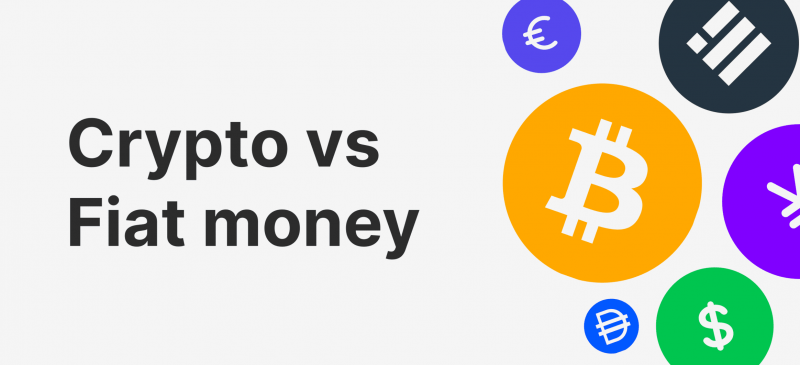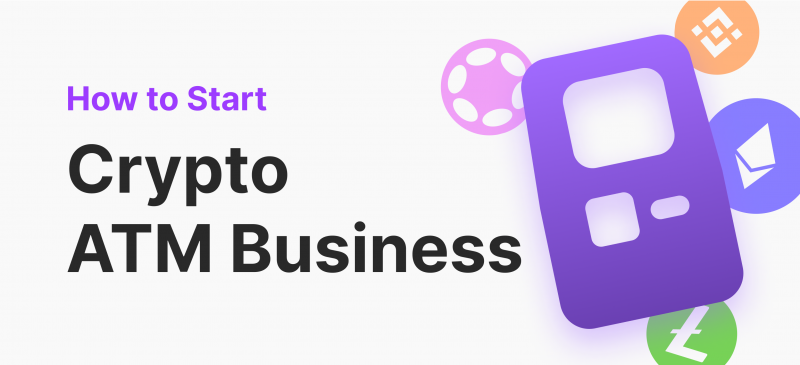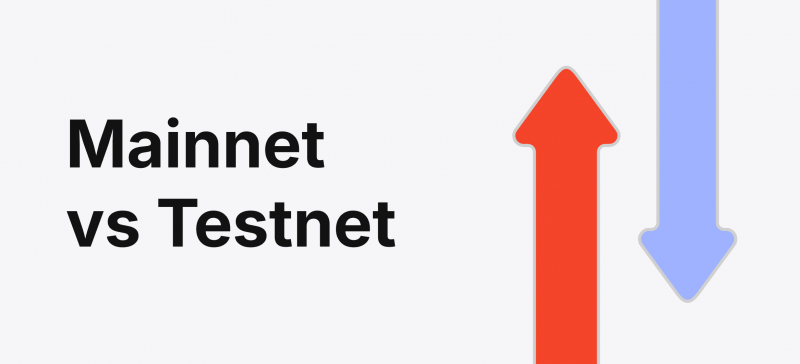Cryptographic currencies are gaining popularity worldwide. To enter this dynamic market, both newcomers and experienced investors often start by converting fiat to crypto. However, traditional money remains a fundamental part of the monetary system and our everyday life, making crypto-to-fiat conversions a must for any crypto user.
This article discusses the reasons for transferring digital assets to traditional money and explores the best way to convert crypto to fiat.
Key Takeaways
- Cryptos are decentralised, while fiat money is governed by a central authority.
- Converting crypto to fiat is necessary to engage with conventional finance services.
- Crypto can be transformed into fiat via wire transfers, exchanges, bank cards, etc.
Crypto vs. Fiat
Cryptocurrencies and fiat currencies are two distinct forms of currency in the market. Cryptos, known for their decentralisation, operate on a peer-to-peer network through blockchain technology, bypassing the need for intermediaries and central control, ensuring transparency and security. In contrast, fiat currencies operate in centralised systems controlled by central banks and governments.
Supply control is a fundamental distinction between cryptos and fiat coins. Virtual tokens adopt a fixed supply mechanism, promoting scarcity and value appreciation, while fiat currencies are subject to dynamic supply adjustments facilitated by central banks.
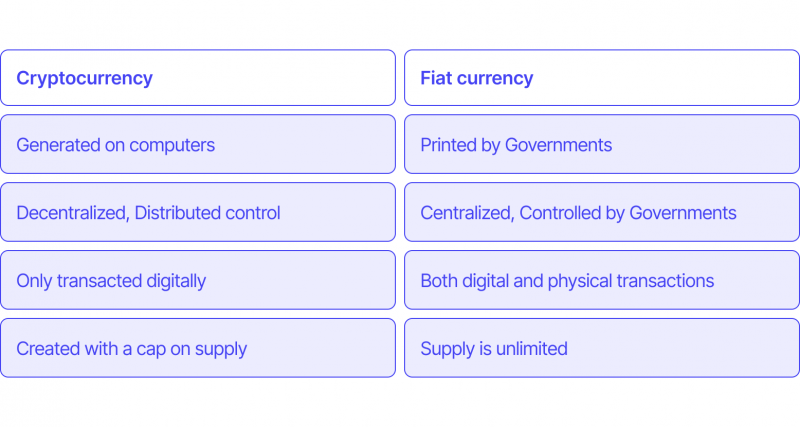
Cryptographic tokens and fiat currencies also differ in terms of anonymity, transparency, accessibility, and supply control. Cryptos offer privacy through pseudonymous transactions, while fiats rely on established banking systems and currency exchange protocols.
Virtual coins allow transactions without geographical restrictions, making them ideal for international transactions. In contrast, fiat currencies rely on established banking systems, which can result in complexities and inefficiencies.
Why Convert Fiat to Crypto?
Blockchain currencies have gained popularity as an investment and money transfer option, showing financial independence and growth potential. However, fiat money remains the dominant currency for saving and spending.
Converting fiat currency into cryptos offers diversification, decentralisation, global access, and security while flipping crypto to fiat is a common practice in the digital asset space due to practicality, accessibility, and regulatory compliance.
Market volatility mitigation is another reason for converting blockchain coins to fiat. Virtual coins are known for their inherent volatility, which can challenge investors and traders. Converting crypto to fiat acts as a protective measure, allowing individuals to insulate their holdings from the unpredictable nature of digital asset valuations.
Crypto-to-fiat conversions have become a pragmatic necessity for users seeking to engage with these traditional financial services, creating a harmonious integration between the innovative blockchain world and the established economic infrastructure. Numerous financial transactions, such as opening bank accounts, securing loans, or participating in conventional investment avenues, often necessitate using traditional currencies.
Regulatory compliance is a critical factor influencing the decision to convert crypto to fiat. The global regulatory crypto environment exhibits significant diversity, with varying approaches and attitudes from different jurisdictions. Transforming crypto to fiat becomes imperative to align with local regulations, meet tax obligations, and adhere to reporting requirements imposed by authorities.
Top 10 Methods to Convert Crypto to Fiat
So, what is the best way to convert crypto to fiat? There are numerous methods to transfer crypto to fiat currency. Let’s focus on the most popular ones.
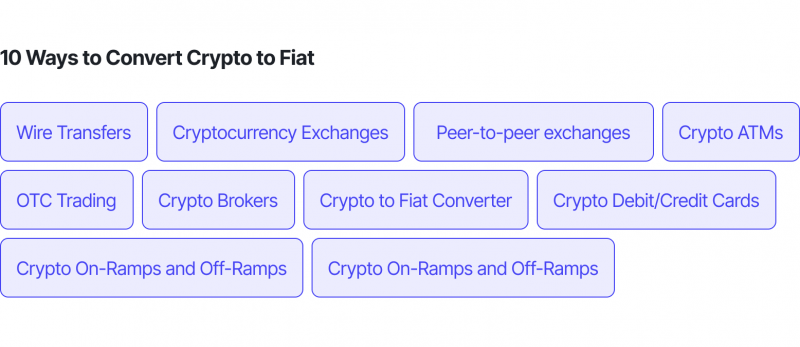
Wire Transfers
Wire transfers offer a secure and direct method for converting crypto to fiat, particularly for larger transactions. They provide a sense of security by transferring to a bank account. However, they come with fees, increased processing times, and potential regulatory scrutiny. While this method provides added security, those seeking rapid and cost-effective transactions may prefer other methods.
Cryptocurrency Exchanges
Crypto-to-fiat exchanges are online marketplaces where users can trade various crypto assets. There are centralised and decentralised exchanges, with the former being more convenient and simple to use. Users deposit BTC into their accounts and sell crypto for the required fiat currency to flip it. The fiat money is then withdrawn to a bank account or used for transactions.
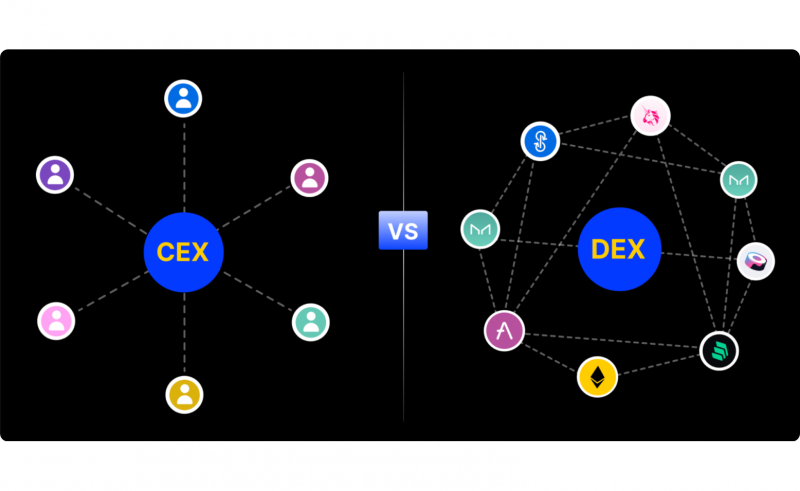
However, crypto exchanges have cons like changing regulations, technical issues, and long transfer times that typically range from a few minutes to an hour, depending on asset type and exchange platform. They also charge fees for services, including deposits, withdrawals, and currency conversion fees. However, this method remains the cheapest way to convert crypto to fiat. When choosing a crypto exchange, consider security measures, fees, and user interface.
Peer-to-peer exchanges
Peer-to-peer exchanges (P2P) are digital asset platforms that facilitate cryptocurrency conversion by acting as intermediaries. They offer lower fees and greater control over transactions, but they can be complex and slow and have limited customer support. Risks include fraud and counterparty issues. Transfer time varies but typically takes 1-6 hours. Users must exercise caution and conduct a thorough vetting of counterparts to mitigate potential risks.
Crypto ATMs
Crypto ATMs are physical terminals that allow customers to exchange crypto for fiat currency. They bridge the gap between the digital and physical worlds, making cryptocurrency transactions more accessible to the general public.
They operate similarly to traditional ATMs, allowing users to buy or sell BTC and other cryptocurrencies using cash or credit/debit cards. Customers scan a QR code or enter their wallet’s public key to initiate a transaction. These ATMs are popular for offline transactions, found in convenience stores, shopping malls, and airports.
While they offer convenience, 24/7 availability, and a limited selection of cryptocurrencies, they also have higher fees, network congestion, and risks of theft or unauthorized withdrawals. Also, they only apply to well-known cryptocurrencies like Bitcoin and Ethereum and are location-dependent.
OTC Trading
Off-exchange trading, also known as over-the-counter or pink sheet trading, is a form of crypto trading that bypasses public exchanges and occurs directly between two parties. This method allows users to exchange large amounts of BTC for fiat cash. OTC desk typically caters to institutional and high-net-worth clients for significant Bitcoin deals
It offers privacy, discretion, large orders without market disruption, wider liquidity, and customizable trades. However, it has higher fees and less transparency compared to exchange-based trades. OTC trading also has higher fraud risks due to the lack of a central authority.
Crypto Brokers
A cryptocurrency broker is a platform that allows users to trade blockchain money with fiat currency, such as USD or EUR. It offers an easy-to-use interface, faster transaction processing, round-the-clock customer support, and more security for funds. However, it has limitations such as a narrow selection of assets, less control, limited trading tools, and higher fees. Cryptocurrency brokers are also susceptible to hacks and frauds. Transparency varies among brokers, making it difficult to compare and decide. Also, transfer times typically range from 4-6 days.
Crypto to Fiat Converter
Crypto converters are centrally operated platforms that let users convert blockchain coins to conventional currency, requiring users to hold their funds on the platform. They offer a wide range of assets and real-time exchange rates.
However, they may be less accurate, may charge fees, and may not be suitable for advanced trading. Crypto converters also expose users to potential risks, such as theft or loss due to hacking. Transactions can be fast, with fees ranging from 0.5% to 1%, and a maker-taker fee structure.
Crypto Debit/Credit Cards
Card transactions, such as debit and credit cards, are a convenient and quick route to convert crypto to fiat, especially for smaller transactions. These cards allow users to spend their crypto holdings at merchants and withdraw fiat currency from ATMs, enabling the seamless integration of digital assets into everyday transactions.
A crypto card is a prepaid card that allows users to spend their cryptocurrency, either online or in-store, by linking it to a crypto wallet or account. It automatically converts crypto into fiat currency, offering benefits like simplicity, enhanced transaction privacy, lower fees, and cashback. Transactions are typically processed immediately, which makes this method the fastest way to convert fiat to crypto.
Crypto debit cards come with some limitations, such as fees, exposure to digital assets, hacking, fraud, and scams. They may also limit the amount that can be converted in a single transaction, making them less suitable for larger conversions.
Crypto On-Ramps and Off-Ramps
On-ramps in crypto allow users to exchange conventional money for digital coins, typically through bank transfers and credit/debit cards. Off-ramps convert digital or virtual currency into cash, enabling users to purchase goods and services in regular currency and convert crypto profits into cash. Both offer advantages such as simplified trading, user-friendly experience, advanced security measures, and high liquidity.
However, they also come with various charges, time-consuming identity verification processes, and potential vulnerability to fraud and scams. Off-ramps can also be used to cash out stolen coins. Transfer times depend on the payment method chosen, with bank transfers taking 1-5 business days and credit or debit cards taking 1-3 business days.
Crypto Payment Processor
If you are running a business, you can integrate a crypto-to-fiat payment processor. This is a financial service that converts and processes cryptocurrency payments into classic fiat currency, enabling businesses and individuals to accept crypto coins as payment for goods and services and receive their equivalent value in their local currency.
B2BINPAY is a top blockchain-based payment processor that facilitates the seamless exchange, storage, and adoption of crypto payments, ensuring instant conversion from crypto to fiat when accepting crypto payments and providing the safety of both firms and investors.
Bottom Line
The cryptocurrency industry offers various methods for converting digital assets into traditional fiat currency. Understanding these options and their strengths and limitations is crucial for efficient and tailored techniques to pick the best way to convert crypto to fiat that suits your goals.




